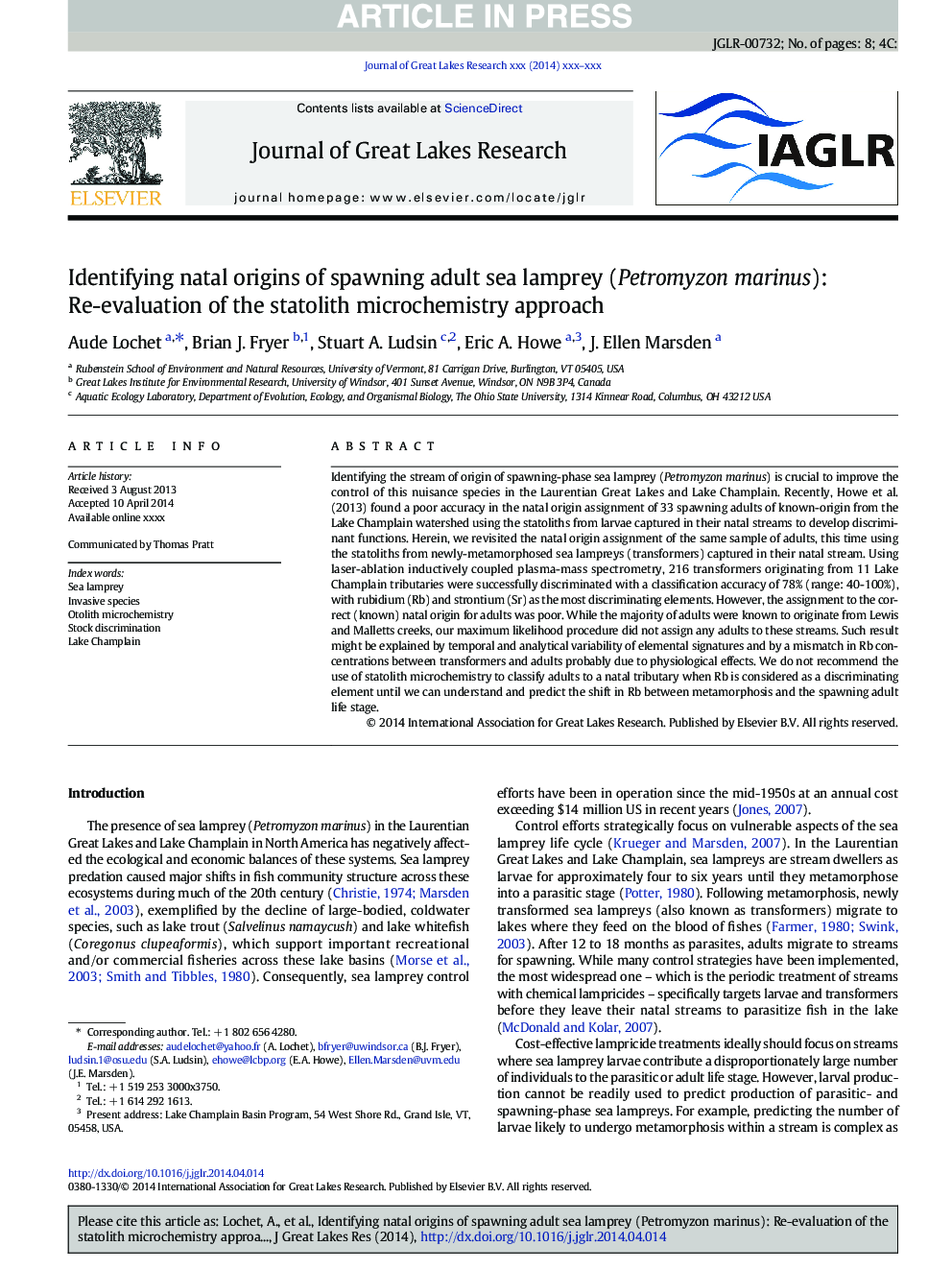| Article ID | Journal | Published Year | Pages | File Type |
|---|---|---|---|---|
| 6305328 | Journal of Great Lakes Research | 2014 | 8 Pages |
Abstract
Identifying the stream of origin of spawning-phase sea lamprey (Petromyzon marinus) is crucial to improve the control of this nuisance species in the Laurentian Great Lakes and Lake Champlain. Recently, Howe et al. (2013) found a poor accuracy in the natal origin assignment of 33 spawning adults of known-origin from the Lake Champlain watershed using the statoliths from larvae captured in their natal streams to develop discriminant functions. Herein, we revisited the natal origin assignment of the same sample of adults, this time using the statoliths from newly-metamorphosed sea lampreys (transformers) captured in their natal stream. Using laser-ablation inductively coupled plasma-mass spectrometry, 216 transformers originating from 11 Lake Champlain tributaries were successfully discriminated with a classification accuracy of 78% (range: 40-100%), with rubidium (Rb) and strontium (Sr) as the most discriminating elements. However, the assignment to the correct (known) natal origin for adults was poor. While the majority of adults were known to originate from Lewis and Malletts creeks, our maximum likelihood procedure did not assign any adults to these streams. Such result might be explained by temporal and analytical variability of elemental signatures and by a mismatch in Rb concentrations between transformers and adults probably due to physiological effects. We do not recommend the use of statolith microchemistry to classify adults to a natal tributary when Rb is considered as a discriminating element until we can understand and predict the shift in Rb between metamorphosis and the spawning adult life stage.
Related Topics
Physical Sciences and Engineering
Earth and Planetary Sciences
Earth and Planetary Sciences (General)
Authors
Aude Lochet, Brian J. Fryer, Stuart A. Ludsin, Eric A. Howe, J. Ellen Marsden,
